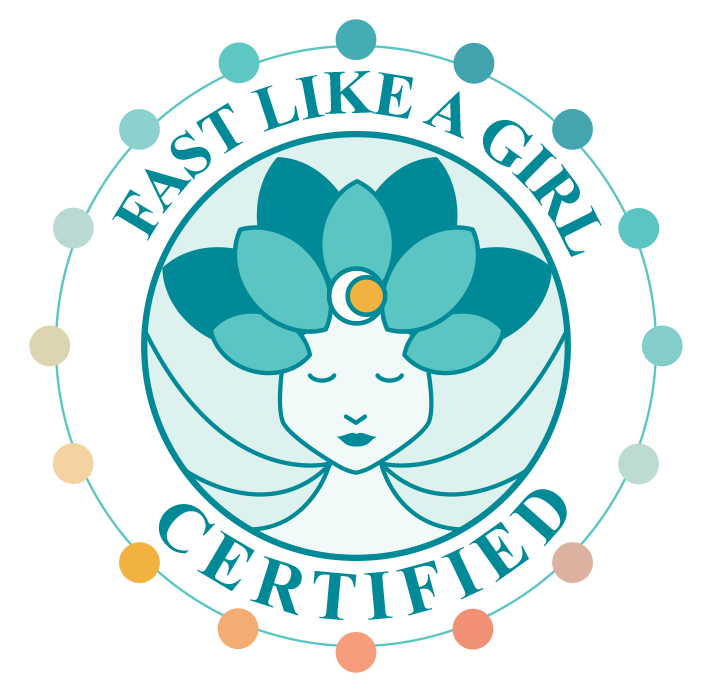Popular Pain Relievers
 Pain is a signal given by the body for attention to that part feeling the pain. It is the warning signal that something should be investigated.
Pain is a signal given by the body for attention to that part feeling the pain. It is the warning signal that something should be investigated.
By shutting off the warning signal with a pain reliever, we have short-circuited healing because we don’t look into the cause of the pain. This habit may change with education to how the body works.
However, over-the-counter pain relievers are so freely used by most people that there is potential for their abuse from ignorance. The larger the dose and the more frequently used, the higher the risk of adverse reactions from these popular pain relievers. They, like most drugs, also deplete nutrients from the body in the process of their being cleared from the body.
Pain Reliever Differences
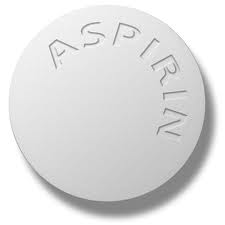 There are two groups of pain relievers: acetaminophen (Tylenol) and nonsteroidal anti-inflammatory drugs (abbreviated as NSAIDs). Both are painkillers (analgesics), but NSAIDs also have an anti-inflammatory action.
There are two groups of pain relievers: acetaminophen (Tylenol) and nonsteroidal anti-inflammatory drugs (abbreviated as NSAIDs). Both are painkillers (analgesics), but NSAIDs also have an anti-inflammatory action.
Some examples of NSAIDs are aspirin, ibuprofin (Motrin, Advil), and naproxen (Naprosyn, Aleve.) Extra-strength Excedrin is a combination, including both acetaminophen and aspirin, plus caffeine.
Safety with dose
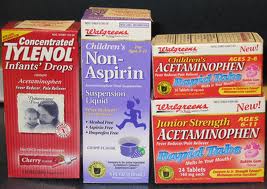 Acetaminophen (Tylenol) is the most widely purchased over-the-counter drug, and the most used analgesic in hospital settings. Nevertheless, there is a small margin of safety in taking it: there is a narrow range between the pharmacologically effective dose and the dose with toxic side effects. In fact, Tylenol is responsible for the most deaths from overdose in the US. It is toxic to the liver at doses over 4 grams per day, of course, with individual variability. This translates to a maximum of 12 regular Tylenol a day, or 8 extra-strength Tylenol a day.
Acetaminophen (Tylenol) is the most widely purchased over-the-counter drug, and the most used analgesic in hospital settings. Nevertheless, there is a small margin of safety in taking it: there is a narrow range between the pharmacologically effective dose and the dose with toxic side effects. In fact, Tylenol is responsible for the most deaths from overdose in the US. It is toxic to the liver at doses over 4 grams per day, of course, with individual variability. This translates to a maximum of 12 regular Tylenol a day, or 8 extra-strength Tylenol a day.
Imagine having a severe headache, how many extra-strength Tylenol do you take at a time? At least 2, right? Then in 1 hour when it isn’t any better, you take 2 more. Or is it more like 3 or 4? In no time at all you can be up to or exceed the maximum 8 per day!
In addition, acetaminophen depletes glutathione, a detoxifying enzyme in the liver. That means there is less of it to do normal detoxification work when acetaminophen is taken. There is also a problem of concurrent use of alcohol, because they compete for the enzymes of detoxification.
Aspirin
 Aspirin, the first NSAID, has had more than 100 years of use, so both the short-term and long-term effects are well understood. Others NSAIDs have similar affects, but vary somewhat and have not been as well studied.
Aspirin, the first NSAID, has had more than 100 years of use, so both the short-term and long-term effects are well understood. Others NSAIDs have similar affects, but vary somewhat and have not been as well studied.
Aspirin reduces inflammation, pain, and blood-clotting time. It has the side effect of stomach bleeding. This is not only because of its contact with the stomach when taken, but also because of its systemic effects.
The first indication of a toxic dose is ringing in the ears. Actually, this can happen at the therapeutic dose when dosed around the clock. Aspirin may also affect liver and kidney function, and it prolongs the bleeding time. It is associated with the development of Reye’s syndrome when given to children infected with viruses such as chicken pox or flu.
Aspirin depletes Vitamin C, folic acid, potassium, sodium, and iron. Some these effects have to do with aspirin’s action in inhibiting the cyclooxygenase (COX) enzymes, 2 of which are known about.
The COX Enzymes
The cyclooxygenase (COX) enzymes are in every cell and play a role in the conversion of substances in the cell to local hormones, some of which are called prostaglandins (PG), which help regulate the cell’s function.
You may have heard about prostaglandins in relation to essential fatty acids, and the effects they have in the body. These are the same substances that are affected by NSAIDs, and the same biochemical pathway. In fact, the balance of omega-3 and omega-6 fatty acids with arachidonic acid in the cell membranes has a lot to do with regulating inflammation, as well. Here, the keyword is balance. Our bodies run all these pathways for a reason, but if they are not balanced, you may end up with unwanted inflammation. Here are relevant fragments of the pathways:
PATH #1 – Omega-6 fatty acids –> several steps –> COX-1 –> PG-1
effects: anti-clotting, anti-asthma, anti-inflammatory, anti-hypertensive, inhibits cholesterol synthesis, decreases pain, anti-depressive, enhances immune response, increases mucus in stomach, decreases histamine release
PATH #2 – Arachadonic acid –> COX-2 –> PG-2
effects: pro-inflammatory, promotes tumors, harmful to the cardiovascular system
PATH #3 – Omega 3 fatty acids –> several steps –> PG-3
effects: anti-clotting, anti-inflammatory, increases HDL, decreases triglycerides, inhibits auto-immune reactions, Deficiency in these conditions: schizophrenia, learning impairment, acne, dandruff
From this summary, you can see that the PG -2 inflammatory process is mediated by the COX-2 enzyme. It has been shown that the COX-2 enzymes is not evenly present in all tissues, and more of it is created by other inflammatory mediators as well as growth factors, hormones and physiologic stress.
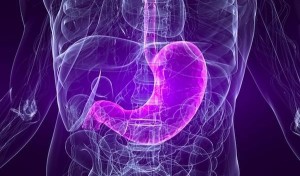 Now, aspirin and other NSAIDs inhibit both the COX-1 and the COX-2 enzymes. While stopping the inflammation, this demonstrates how side effects are produced. Notice that one of the effects of the PG-1 is production of stomach mucus, and when it is inhibited, the strong acids of the stomach can eat through the lining, resulting in stomach bleeding.
Now, aspirin and other NSAIDs inhibit both the COX-1 and the COX-2 enzymes. While stopping the inflammation, this demonstrates how side effects are produced. Notice that one of the effects of the PG-1 is production of stomach mucus, and when it is inhibited, the strong acids of the stomach can eat through the lining, resulting in stomach bleeding.
Aspirin works as a blood thinner because it binds irreversibly to platelets making them unable to participate in the clotting process. However, aspirin also has an effect of inhibiting the anti-inflammatory effects of the prostaglandins as seen in the above pathway. You can’t get one effect without getting the other. It is not helpful for cardiovascular health to be inhibiting an anti-inflammatory pathway.
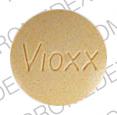 For pain and inflammation relief, the newer COX-2 inhibitors, sometimes called selective NSAIDs were designed to be safer. Vioxx (rofecoxib) and Celebrex selectively inhibit just the COX-2 enzymes, not COX-1. The reality is that the human body is much more complex than a few COX enzymes. Studies have shown that there is a significantly increased risk of heart attack and stroke, as well as high blood pressure. In fact there is an FDA warning, and Vioxx and Bextra were removed from the market in 2004 – 05 due to their adverse effects, but Celebrex was considered to have benefits that outweigh the risks for informed users.
For pain and inflammation relief, the newer COX-2 inhibitors, sometimes called selective NSAIDs were designed to be safer. Vioxx (rofecoxib) and Celebrex selectively inhibit just the COX-2 enzymes, not COX-1. The reality is that the human body is much more complex than a few COX enzymes. Studies have shown that there is a significantly increased risk of heart attack and stroke, as well as high blood pressure. In fact there is an FDA warning, and Vioxx and Bextra were removed from the market in 2004 – 05 due to their adverse effects, but Celebrex was considered to have benefits that outweigh the risks for informed users.
Bone healing was inhibited in studies with Vioxx and Celebrex. In addition, these drugs are toxic to the kidneys. There are also reports of Vioxx creating symptoms of aseptic meningitis such as headache, fever, sensitivity to light, neck stiffness and confusion.
Natural COX-2 Inhibitors in your Kitchen
 It is of little surprise that nature has provided us with foods and spices that inhibit the COX-2 enzyme, but also create a balanced effect. For many of us, we have to look no further than the kitchen. Do you find
It is of little surprise that nature has provided us with foods and spices that inhibit the COX-2 enzyme, but also create a balanced effect. For many of us, we have to look no further than the kitchen. Do you find
- Green tea
- Ginger
- Rosemary
- Oregano, or
- Turmeric (in curry powder)?
That is a start. You may also want to stock Baikal Skullcap, Feverfew, Barberry, Nettle leaves, or Hops. The less common herbs are Holy Basil, Coptis, Polygonum, or an extract of phellodendron tree. In the animal kingdom, look for oily coldwater fish.
The leaders for spicing up your cooking are the anti-inflammatory cousins Ginger and Turmeric. There is wisdom in their design, having hundreds of different constituents, unlike a synthetic COX-2 inhibitor, which has one constituent. The different constituents synergize to produce their effects, and balance each other out to safely modulate the COX-2 enzyme while bringing balance to COX-1.
Listen to these facts.
Ginger has at least 4 prostaglandin inhibitors more powerful than the drug indomethacin, but also does not cause blood clotting or artery constriction (like synthetic COX-2 inhibitors do.) Ginger has 180 times more protein-digesting enzymes than papaya. This is useful in cleaning up products of inflammation, when taken orally on an empty stomach.
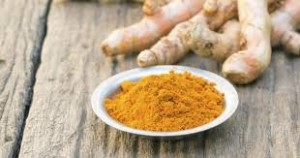 Turmeric is extraordinarily anti-oxidative, and it also stimulates the liver and its leading detoxification enzyme. Curcumin is a potent constituent of Turmeric, at least 50% as effective as cortisone for reducing inflammation without the immune suppressing side-effect. Curcumin is a strong tumor inhibitor, especially topically applied for skin tumors. At the same time, the other constituents in turmeric strongly inhibited tumors in studies, without curcumin!
Turmeric is extraordinarily anti-oxidative, and it also stimulates the liver and its leading detoxification enzyme. Curcumin is a potent constituent of Turmeric, at least 50% as effective as cortisone for reducing inflammation without the immune suppressing side-effect. Curcumin is a strong tumor inhibitor, especially topically applied for skin tumors. At the same time, the other constituents in turmeric strongly inhibited tumors in studies, without curcumin!
Please note that Ginger and Turmeric as well as Feverfew have such strong anticoagluant and anti-platelet effects that their use will amplify the effects of medications taken for the same effect, and either may want to be avoided in that case or the amounts of each must be stabilized.
 Of special mention is Holy Basil, or Ocimum sanctum. It is not related to the basil you put in pesto, but smells a little like bubble gum and makes a great tea. It has anti-ulcer effects, protects from radiation – from sunlight to cancer radiation treatments, and calms stress by balancing the corticosteroid levels in the blood. All this on top of inhibiting the COX-2 enzyme and its inflammatory effects!
Of special mention is Holy Basil, or Ocimum sanctum. It is not related to the basil you put in pesto, but smells a little like bubble gum and makes a great tea. It has anti-ulcer effects, protects from radiation – from sunlight to cancer radiation treatments, and calms stress by balancing the corticosteroid levels in the blood. All this on top of inhibiting the COX-2 enzyme and its inflammatory effects!
Rosemary is often used topically as an essential oil to relieve aching rheumatic muscles. Oregano is also easily absorbed through the skin, but allergies to the concentrated oils may develop in sensitive individuals. Feverfew is used as a migraine preventative, probably due to its prevention of inflammation in the brain. Hops promotes mental peace and sedates while it inhibits the COX-2 enzyme. Barberry is anti-microbial as well as anti-inflammatory. Green tea synergizes its effects with Turmuric and Ginger for anti-tumor activity. Baikal Skullcap has powerful wound healing effects along with its anti-inflammatory effects. Nettles is especially helpful for gouty arthritis as it promotes the excretion of uric acid while reducing inflammation.
 A discussion on anti-inflammatories would not be complete without the mention of omega-3 fatty acids, as found in some cold water fish. While we know that a proper balance of the fatty acids are necessary in our diet, it has been shown that among all the fatty acids, only the omega-3s dose-dependently inhibited the production of COX-2 without affecting COX-1.
A discussion on anti-inflammatories would not be complete without the mention of omega-3 fatty acids, as found in some cold water fish. While we know that a proper balance of the fatty acids are necessary in our diet, it has been shown that among all the fatty acids, only the omega-3s dose-dependently inhibited the production of COX-2 without affecting COX-1.
In the dietary supplement industry, there is an ingredient called nexrutine, which is derived from the phellodendron tree native to Asia. In animal studies, it was shown as effective as the NSAID naproxin in reducing pain and inflammation. It is marketed as FlexAnewTM and PharmaFlexTM. I find this drug thinking with a natural twist.
Why do we take an anti-inflammatory?
 Is it pain relief? But pain is a signal to engage the mind as well as mobilize blood for bringing in healing elements. When we cooperate physically and mentally to get the message, deeper healing can occur.
Is it pain relief? But pain is a signal to engage the mind as well as mobilize blood for bringing in healing elements. When we cooperate physically and mentally to get the message, deeper healing can occur.
By quickly cutting off the sensation of pain, like aspirin and other NSAIDs do, this process is circumvented. Now, there may be a time and a place to do this, but it is very limited.
Treatment with these herbs reduce the pain and inflammation slowly and gently, while other steps can be taken to promote the deeper healing which needs to occur.
This is the future of pain relief.
WANT TO USE THIS ARTICLE IN YOUR NEWSLETTER OR WEB SITE?
“Naturopathic Physician Dr. Cheryl Kasdorf is a doctor who listens and has answers with a natural approach that works. She is known as the go-to person to get back your get-up-and-go when it is gone, gone, gone. Get your FREE gift “Dr. Kasdorf’s Health Secrets for Feeling & Looking Great” at drcherylkasdorf.com



